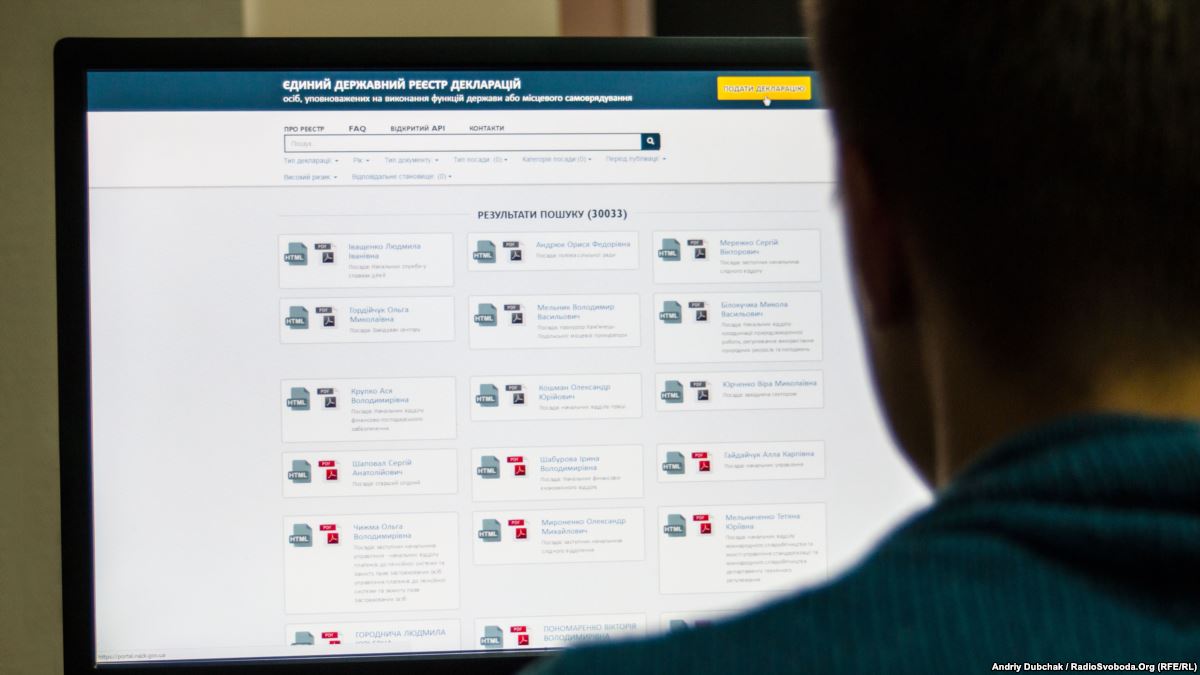

What happened?
On 25 September the NACP has launched a system of logical and arithmetic control of submitted electronic declarations. It will calculate the risk potential of each specific declaration. If the risk is high, the Agency will verify all the information in the declaration. If it is low, it will only check the identified risks.
Okay, and why is it important?
Launch of the automatic verification of electronic declarations has been regularly flagged as one of Ukraine’s international obligations. It has been mentioned in the context of maintenance of the visa free regime and as one of the conditions for receipt of macrofinancial assistance.
Before, Ukraine has already lost a tranche of €600 million from the EU. Automatic verification of declarations was one of the four conditions the country has failed to fulfill.
Wait, what does it even mean?
According to the Regulation, the logical and arithmetic control contains two components:
1) Control of conformity of declaration data.
This means that chapters of the declaration are compared among themselves (for instance, expenditures and financial obligations are compared with the income and assets) and comparison with the previous declaration.
2) Control of correspondence of the declaration data to electronic databases.
This means that the declaration is compared to electronic registers and national databases.
So tomorrow over 2 million declarations will be finally compared with registers and among themselves?
No. According to the Regulation, the comparison is not done until, among other things, the technical possibility is provided, which NACP must share on their official website. Instead, the NACP says the opposite.
What is going on with the registers now?
Before the submission deadline of annual declarations, the NACP had access (non-automatic, that is, through manual requests) to 13 registers and databases. They needed additional access to 16 more (or they don’t have complete information, which is another problem).
In August, the NACP announced that it had signed protocols of automatic information exchange with the Retirement Fund, Ukrainian Transport Security and the National Commission for Securities and the Stock Market.
Before September, the NACP was in the process of approval of protocols with the Ministry of Justice, the Ministry of Internal Affairs, the State Fiscal Service of Ukraine, Stategeocadastre and State Border Control Service. This is now enough.
How many registers should be connected and what are they?
A CMU Directive contains a list of all registers and databases with which the NACP must sign protocols. Administrators of registers must provide, and the NACP must receive direct automatic access to registers, including those administered by the Ministry of Justice of Ukraine.
(The registers in question are the State Register of Property Rights, Unified State Register of Legal Entities, Private Entrepreneurs and Civic Organizations; State Register of Encumbrances over Movable Property; State Register of Marital Status; Unified Register of Powers of Attorney; Inheritance Register.)
Moreover, there is an opinion that legislative changes should be made before the NACP can access the registers of the Ministry of Justice. Even though before the Ministry believed that it was “strange if public agencies will have to increase their staff to hire more civil servants who would check the declarations manually instead of using modern automatic systems.”
Back in 2016, the NACP and the Ministry of Justice concluded a memorandum on cooperation and exchange of information. Then, the Minister promised all the necessary assistance with connection of the NACP to registers operated by the Ministry.
Or what?
If the process of NACP’s connection to all registers is not accelerated, half the automatic verification of declarations will not start working. The Agency will continue to send written requests and verify all declarations manually, with all the drawbacks stemming from this.
Maybe, at least the possibility to lose the financial assistance from international partners will help to set the process into motion after two years of failures?
Oleksandr Kalitenko, Transparency International Ukraine, for Ukrainska Pravda






